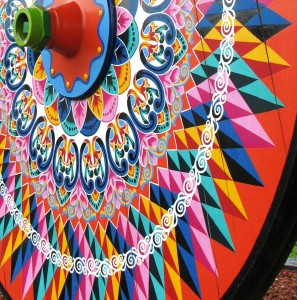 The town of Sarchi has become well known as the home of that colorful symbol of Costa Rica, the painted ox cart. Yes, miniature versions have become popular as mini bars purchased by tourists to ship home. But the history of the ox cart is much more interesting, and they have played a very important part in the economic development of this country.
The town of Sarchi has become well known as the home of that colorful symbol of Costa Rica, the painted ox cart. Yes, miniature versions have become popular as mini bars purchased by tourists to ship home. But the history of the ox cart is much more interesting, and they have played a very important part in the economic development of this country.
During the colonial period, they were used for the transportation of coffee, sugar cane, tobacco and other agricultural products. Teams of two oxen would pull the product laden carts down the treacherous paths from the Central Valley to Puntarenas for eventual export. On the return trip, they would be filled with manufactured goods from Europe. This includes the famous metal church in Grecia, a small town near Sarchi. This huge church was prefabricated in Belgium in the 1890’s, and shipped to Puntarenas. It was then transported piece by piece by hundreds of the relatively tiny oxcarts, a process that took a period of several years. If you visit this magnificent edifice, take a moment to think about the drivers from a century ago, walking every step next to their oxen, and exposed to the elements. It was a difficult life.
The owners of the oxcarts painted the carts to preserve them. But as time went by, the painting became more and more elaborate. A kind of competition eventually developed over who not only had the finest team of oxen, but who had the most beautiful cart. A national icon was born. Nowadays, you can still find the occasional ox cart in use in the rural areas. However modern truck tires have replaced the gaily painted solid wooden wheels, and you usually won’t see the intricate designs of days gone by.
But the painted oxcart lives on as a locally beloved art form. When you are in Sarchi, stop by one of the oxcart factories to purchase souvenirs. Take some time to check out the artisans working in the rear. They fabricate the different wooden parts on site. If you are lucky, you will see them methodically laying down the layers of paint necessary in each design.
In 1988, the government designated the painted oxcart as the National Symbol of Work. This was in recognition of the huge contribution that the humble oxcart made to the economic and social development of Costa Rica.